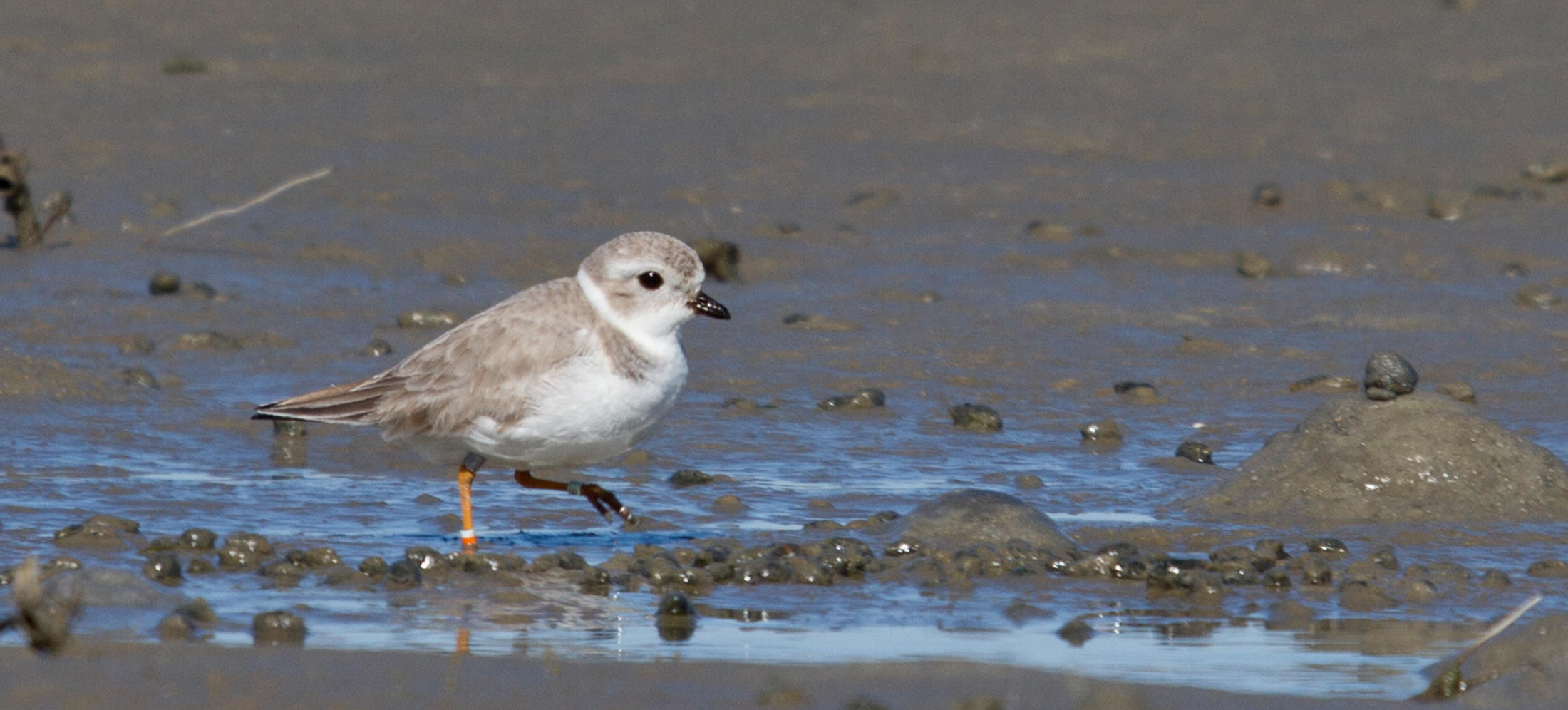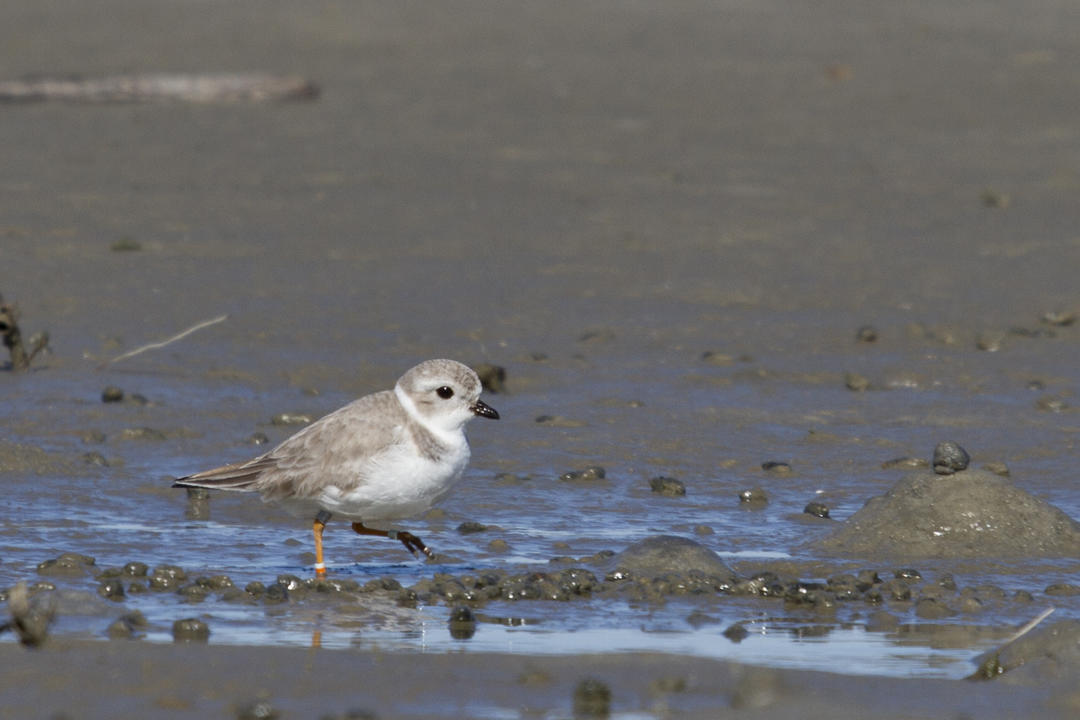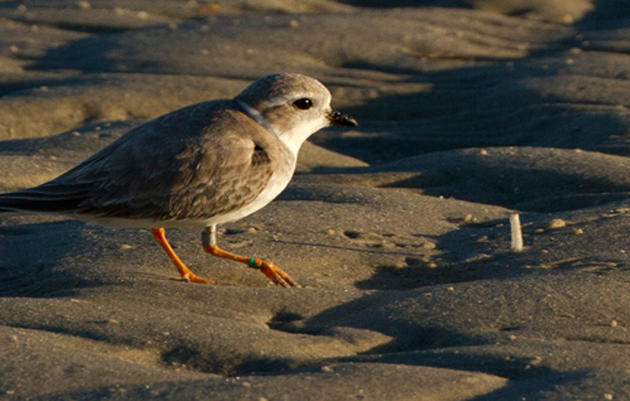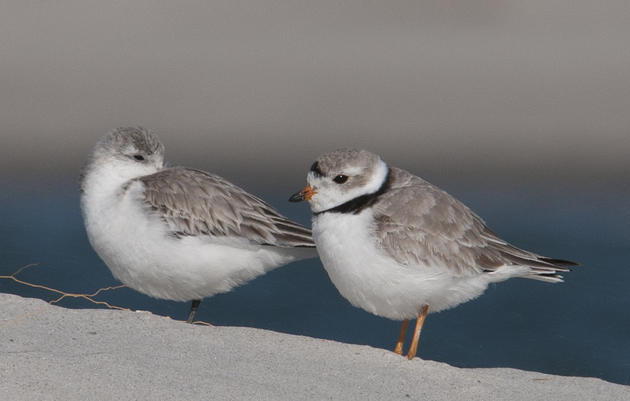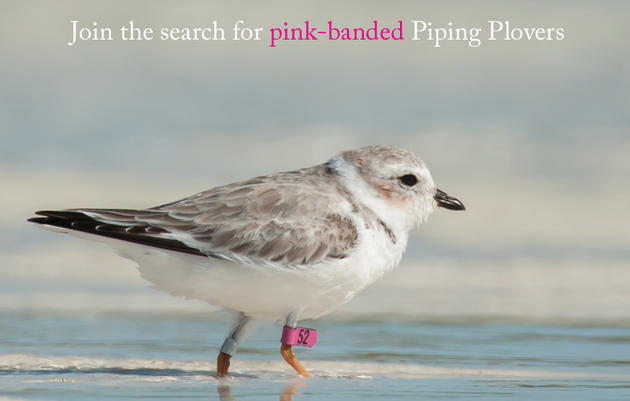North Carolina is the only state where Piping Plovers are found as both breeding and wintering birds – meaning they inhabit the coast year-round!
Learn where to find them, how to help them, and more in this Priority Bird Profile: Piping Plovers.
Why does this bird matter to Audubon NC?
Piping Plovers have been heavily affected by human activity on beaches and are now an endangered or threatened species, depending on where they nest.
Those found in North Carolina are from all three breeding populations: Atlantic Coast, the Northern Great Plains and the Great Lakes. While Piping Plovers return to the same beach wintering sites year after year, their nests are extremely difficult to spot due to the coloring of their eggs and newly-hatched chicks (they blend with the sand!).
Although they receive protection wherever possible, North Carolina’s plovers still face survival issues because of disturbance from human recreational activities including dogs and vehicles, over-abundant predators like raccoons, overwash during nesting by storms, and declining habitat due to changes in landscape from man-made development and coastal engineering projects.

Where can people see this bird/when?
Piping Plovers are dainty little birds: their small, round bodies, short bills, and tendency to “run – pause – run” make them easy (and fun!) to identify. They love to eat small crustaceans, marine worms and insects.
SPRING & SUMMER
Piping Plovers nest most abundantly at Cape Lookout National Seashore, but in early spring migrating plovers can be found across the coast, especially at inlets such as Rich Inlet and New Topsail Inlet, and around Rachel Carson Reserve’s Bird Shoal.
WINTER
Visit the north end of Wrightsville Beach (at Mason Inlet) year-round to see flocks of migrating and wintering shorebirds, including the Piping Plover, Black-bellied Plover, and Dunlin. Other inlets, from Oregon Inlet south, are also critically important to wintering Piping Plovers.
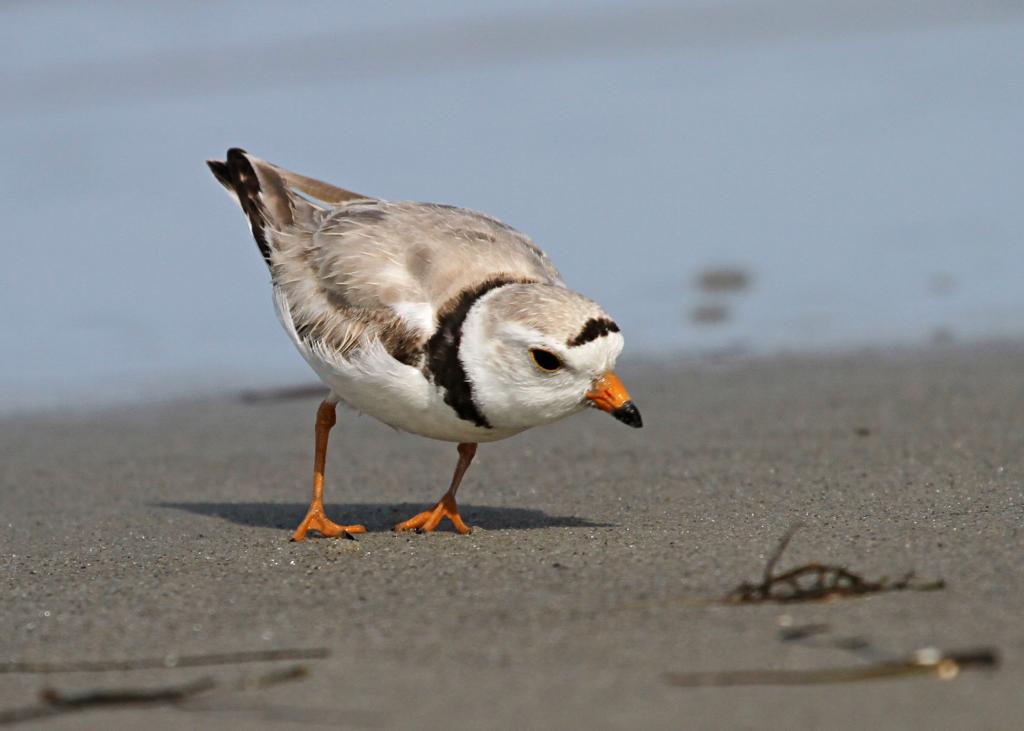
How is Audubon NC helping this bird?
Because the Piping Plover inhabits North Carolina year-round, Audubon NC, along with other organizations, works to monitor and protect them throughout the year.
In 2016, the Sixth International Piping Plover Winter Census took place. The winter census happens every five years during a two-week window in January or February and is an important way to monitor the status of these birds. Biologists and volunteers conduct surveys throughout the winter range. More than 35 sites were surveyed across the state! The census found 101 Piping Plovers in North Carolina, which was the highest count in the state since 1991 when the first census was conducted!
We also monitor four inlets in the Cape Fear region year-round to detect banded Piping Plovers and record their habitat use, seasonality, and abundance. This information not only helps broader efforts to understand survivorship and migration patterns, it provides valuable information to regulatory agencies. This data can then be used to defend critical Piping Plover habitat from incompatible coastal development and engineering projects.
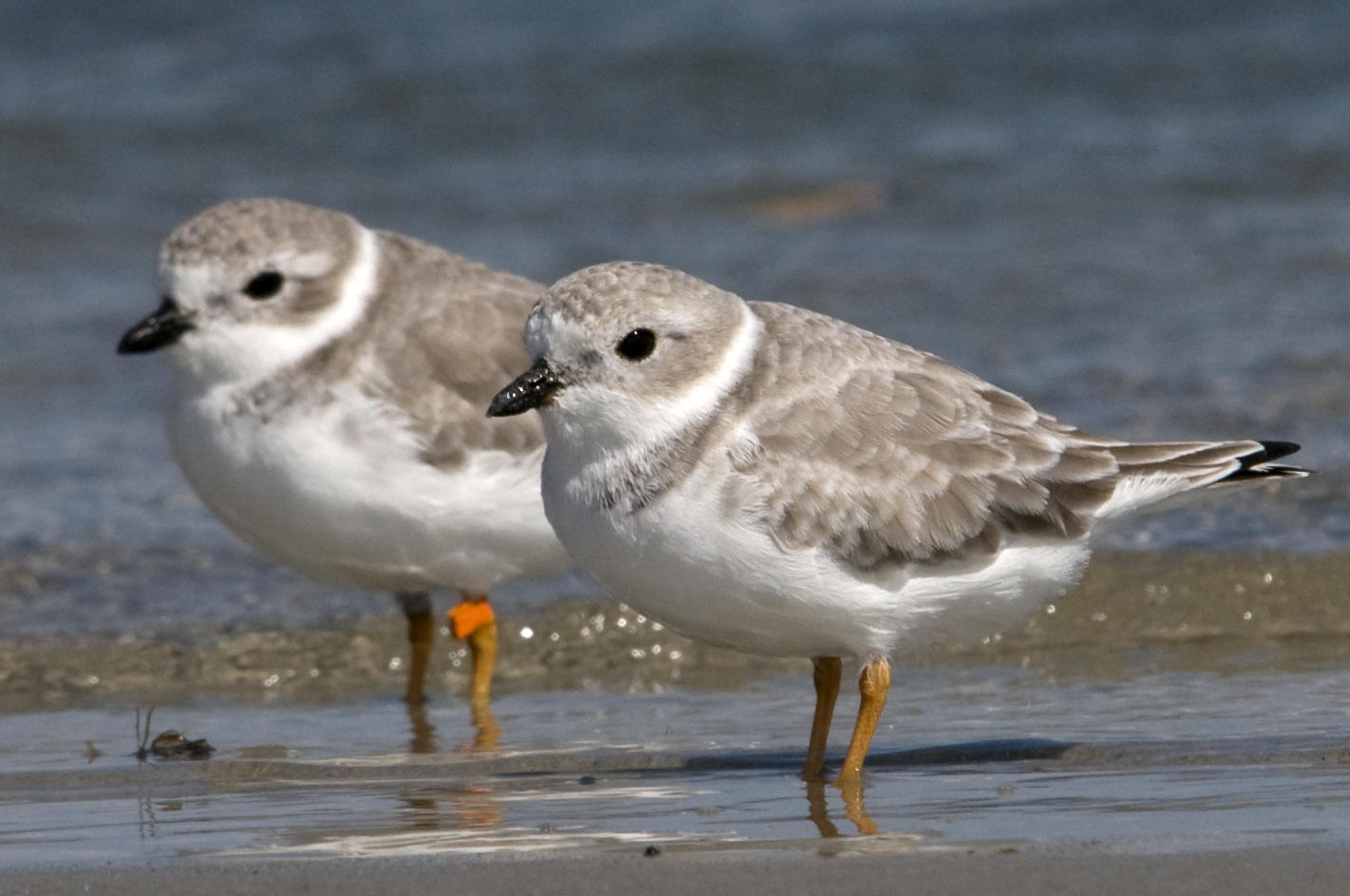
How can locals or beach visitors help this bird?
One of the best and quickest ways you can make an impact for any beach-nesting bird is to volunteer with the Wrightsville Beach Bird Stewards! From April to August, this dedicated group of volunteers helps put up postings around nesting sites, hosts fun fundraisers, and offers guided bird walks to teach beach-goers about our beach-nesting birds.
Here are some additional ways you can help piping plovers and other coastal birds.
- Pay attention to areas on the beach with signage or fences. Even if you don’t see a sign, if a bird is flying overhead, calling, or pacing back and forth, you are probably too close to a nest or chicks. Move back until the behavior stops.
- When boating, pay attention to birds and avoid anchoring where you see flocks foraging or resting.
- Follow local ordinances regarding dogs on the beach and don’t let your dog (or your child!) chase birds—they need their energy for migration and nesting, not flying away from disturbances.
- Do not feed gulls and avoid leaving food waste on the beach. Feeding them can lead to an unnaturally higher number of gulls, who can prey on other birds’ young and eggs.
- Discard fishing line properly. Birds can become entangled in the line and become injured.
- Report incidents of nest destruction and disturbance to the North Carolina state wildlife agency.

